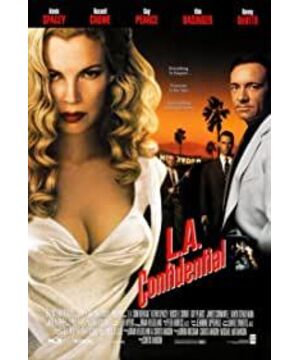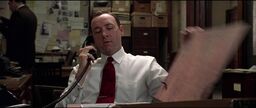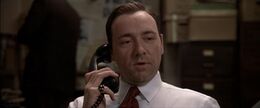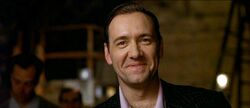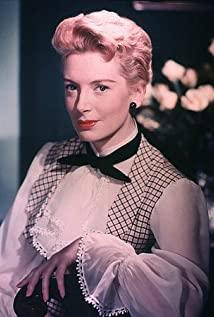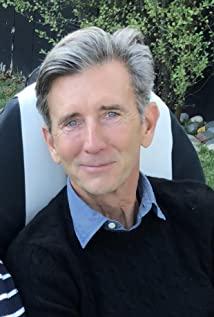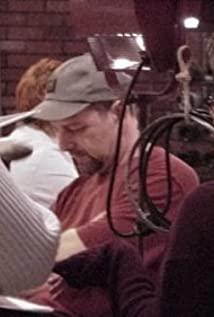The superstar has fallen, and the four mourn together! Even more sad: Kobe left a chicken feather behind him. These disputes not only reflect the demons of human nature, but also have some institutional problems to some extent. How did chicken feathers form here? The movie "L.A. Confidential" can help people better understand this matter.
Recently, Kobe Bryant’s photo was leaked by the police and there was a lot of trouble. Kobe’s widow, Vanessa Bryant, couldn’t bear it, and determined to hire a lawyer to prosecute the eight police officers involved, and said that he would pursue the gossip media TMZ legally. This made the US police face. Nothing.
Wa Sao determined to sue eight police officers involved
It was not Kobe's relatives who learned of the death the first time, it was the well-known gossip website TMZ.
It is understood that the Los Angeles police rushed to the scene of the accident at around 9:45 a.m. Pacific time on January 26. At this time, the wreckage of the helicopter was still warm, and some low-level police officers had not waited to find out whether Kobe was dead. When he was alive, he began to take pictures regardless of discipline.
It is said that the police should conduct an all-round blockade before investigating the case to ensure the privacy of the deceased. However, at 11:24 noon that day, the news of Kobe’s death and the photos of the scene were exclusively exposed by the well-known gossip website TMZ for the first time, making a global sensation. With hundreds of millions of exposures, the profits are immeasurable. Ironically, Kobe's widow Vanessa Bryant and the Lakers learned of Kobe's death through the TMZ report.
TMZ announced Kobe's death for the first time
How did TMZ get past the police blockade and learn about it? Do the US police make huge profits by selling photos and news? This has become an unsolved mystery.
Is there such a side to the US police?
It is reported that after the incident, some low-level police officers disregarded discipline and took Kobe's last photos, showing off everywhere inside and outside the police station, and even used it as a bargaining chip for picking up girls. Fortunately, they were reported by well-meaning people to curb the development.
This kind of disrespect for the deceased immediately caused public outrage. Bryant’s widow, Vanessa Bryant, expressed grief and indignation, saying that this matter cannot be forgiven, and called on the Los Angeles Sheriff’s Office to take the most severe punishment to the police involved. The identity is made public.
Wasao calls for severe punishment for leakers
However, the attitude of the police was disappointing. In order to preserve the face of the police station, when the incident was reported by the masses, the first reaction of the police seniors was not to severely punish the leaker, but to hope that the police officer who had the photo of Kobe’s remains would delete the photo as soon as possible. In order to settle the matter, she did not want to expand the matter. It was not until Vanessa Bryant intervened by legal means that the eight officers involved in the incident were suspended.
All of this broke the good impression that everyone had built on the American police through Hollywood blockbusters, and saw their unprofessional side seeking self-protection.
In fact, the Los Angeles police has historically used the "previous record" of exposing the privacy of celebrities and exchanging benefits with gossip media. The classic film "L.A. Confidential" has performed a large-scale interpretation of this. Let's talk about this movie.
"L.A. Confidential"
A good crime film exposing corruption in the American police in the 1950s
The film "L.A. Confidential" is adapted from the novel of the same name by James Airore. The story takes place in Los Angeles in the 1950s. At that time, Los Angeles was full of crimes and various illegal transactions, and the police was extremely corrupt. Go with the underworld and make huge profits.
In this terrible environment, three police officers with different consciences and different personalities came together to detect a murder case. After layers of investigations, they were surprised to find that the big boss behind the scenes was not someone else, but a big policeman. In the face of the attractive benefits offered by the power and the opposing party, what should the three police officers do? Is it a compromise or a resistance for justice?
Three policemen
The film won 9 Oscar nominations and 4 Golden Globe nominations for its superb performance and interlocking, flawless plot, and finally won the Oscar for Best Supporting Actress and Oscar for Best Adapted Screenplay. As well as the Golden Globe Award for Best Supporting Actress, it is still the pinnacle of the black crime suspense film in the United States.
Three reasons for the film’s success are commendable:
1. A vivid restoration of the social environment of crime rampant in Los Angeles in the 1950s.
Although the film was produced in 1997, it has a strong texture of the 1950s. As soon as the film opens, it will take us to the heavenly and beautiful Los Angeles in the impression of the daily life of Los Angeles citizens in the 1950s and nostalgic tunes.
"L.A. Confidential" stills
However, just as we were immersed in the prosperity and beauty of Los Angeles, the narrator changed the conversation and told us that what we saw was an illusion. Then, he brought out the underworld leader Mickey C in Los Angeles and accused him of gambling, stealing and cheating. A series of heinous crimes, through the screen display of criminal transactions, let us see the unknown side of Los Angeles at that time.
"L.A. Confidential" stills
A city that is both prosperous but full of sins leaps forward.
A classic Hollywood look with a sense of time
In addition, the film also put a lot of effort into the actor's dress. The male protagonist's chronological suit and the female protagonist's nostalgic Hollywood look are both pleasing to the eye and give us a strong signal of the 1950s.
2. Construct a group portrait of the police station and workplace to show the violence and corruption of the police at that time.
The film provides a three-dimensional creation of the workplace environment of the Los Angeles Police Department in the 1950s. In order to achieve this, the screenwriter has focused on portraying three types of representative police officers, showing the violence and greed of the police through their respective experiences in the workplace. Rot.
These three types of police officers not only share the common characteristics of the group they belong to, but also have distinct individual characteristics. The combination of commonality and individuality makes the characters both righteous and evil, flesh and blood, and provides a logical and self-consistent premise for the last moments to fight for justice.
For this reason, the screenwriter deliberately designed a "police officer assaulting a prisoner" incident. In this incident, although the police violated discipline, the prisoner himself was indeed very guilty. It is difficult to understand the hatred of the police. Full of sympathy.
Police officer assaulted prisoner exposed
After the incident was exposed, the three police officers were called by their superiors for questioning. Their different reactions deepened the characters' personalities.
Bard, a violent law enforcement but pure and benevolent
The police officer Bud, played by Russell Crowe, had a dark expression and a tall and mighty expression. As soon as he appeared on the stage, he beat up a domestic violence man without going through any due process. After that, every time he encountered illegal things Repeatedly use fists to solve difficult problems.
Therefore, Bard was actually the representative of the "violent" police officers of that era.
Constable Budd
However, if you know Bard’s experience, you will dispel misunderstandings about him. He chose to be a police officer because he witnessed his father’s domestic violence when he was a child and his mother, hoping to use force to protect those who are unable to protect themselves.
Therefore, under Bud’s rugged and scary appearance, there is actually a simple and benevolent heart hidden. This also directly leads to his handling of the "police officer beating a prisoner", no matter how the prosecutor induces a confession, he did not betray his brother, or even betray his brother. Do not hesitate to leave for this.
Jack who uses power to make money but is not broken to his bones
The police officer Jack, played by Kevin Spacey, is gentle and slick. He is well versed in the hidden rules of the police. By cooperating with the gossip media, he has earned a lot of minions by exposing the privacy of celebrities.
The main characteristic of this type of police officer is to protect oneself wisely.
Constable Jack
However, Jack’s nature is not completely evil. He is greedy for money but not greedy. He will do his best to take care of other police officers. This also makes him very popular. In addition, he enforces the law impartially in his business, and there is no frame of blame.
In dealing with the "police officer assaulted the prisoner", he chose the most compromised method, only to testify to the police officer who is about to retire. Embarrassing superiors.
Ed, who admires power but sticks to principles
The police officer Ed, played by Guy Pierce, has a meticulous hairstyle, wears gold-rimmed glasses, is highly educated, and has a deep city government. The commonality of this type of police officer is to be in power at all costs and achieve the pinnacle of power.
Therefore, he is the representative of the tactical police officer.
Constable Ed
But Ed also has his own principles. He chose to be a policeman to inherit the will of his father who died in the line of duty. Therefore, his principle is stronger than anyone else.
This is why he was the only one who chose to betray the police officer involved in the case of "police officer assaulted the prisoner" and put himself in power.
The three police officers combined with their distinctive representation and versatility to form a group portrait of the Los Angeles Police Department in the 1950s, allowing the audience to experience the chaos, disorder and corruption of the Los Angeles Police Department in the 1950s.
Three, the plot logic is seamless
The most impressive thing about the whole movie is the seamless logic of the plot, which is mainly manifested in:
The character's behavior motivation is logically self-consistent.
The character's behavior motivation is an essential element to promote the development of the plot. If the motivation does not match the behavior, the audience will find it difficult to justify. Reflected in "L.A. Confidential", the biggest problem for the screenwriter is how to get the three police officers to move toward justice in the context of the overall corruption of the police.
"L.A. Confidential" stills
The screenwriter wisely used the special character experience and created the righteous and evil characters to rationalize the behavior motives of the three male policemen. Although there are various police habits in them, they have not lost the last of being a policeman. A trace of conscience has provided them with a high degree of conviction in finding the truth of the murder in the latter half of the film.
The logic of solving the case is self-consistent.
In the process of solving the case, the film echoes the beginning and the end, peeling off the cocoons layer by layer, forming a complete logical closed loop.
There are two main movie clues:
One clue is the transfer and promotion of the three police officers, paving the way for them to be involved in the detection of the murder;
Another clue is the clue to find criminal evidence. The first half of the film throws out a lot of small clues, such as the "Lily Club" card that Jack discovered when he was investigating a drug dealing case, and the woman Bud encountered on the street with a wounded nose. (It happens to be one of the murder victims), Bud found the woman's lip print on the wine glass at the crime scene, and Bud found the former police corpse in the basement. In the end, these clues together form a complete chain of evidence for investigating the case, allowing the truth to gradually surface, making the audience stunned by shooting the case.
"L.A. Confidential" stills
The whole film deeply exposes the darkness of the Los Angeles police circle in the 1950s. At the same time, it also satirizes the unscrupulous practice of the police and the media to collude for profit. It makes the audience feel that the collapse of the legal system and public opinion is a terrible thing, but this is a pity. This phenomenon has not been eliminated until now.
Specifically, the leak of a series of photos after Kobe’s death is not only a disrespect for the deceased, but also a serious violation of human rights, damaging the feelings of family members and fans around the world. Is there any exchange of interests between the police and TMZ? , Should a special investigation be launched and the parties involved should be severely punished? I think we should give an explanation to all those who care about this matter.
The police admit that the leaked photos violated departmental regulations
From this, we can also see the other side of the United States: every day clamoring about freedom of speech and protecting people’s privacy, but in the end, this kind of embarrassment is caused, which is really enough.
Finally, I hope Vanessa Bryant can win the lawsuit, safeguard the legitimate rights and interests of the deceased, and let Kobe rest in peace as soon as possible. We will wait and see what happens next.
Kobe Bean Bryant
What do you think of the movie "L.A. Confidential"? Welcome to leave a message
View more about L.A. Confidential reviews


